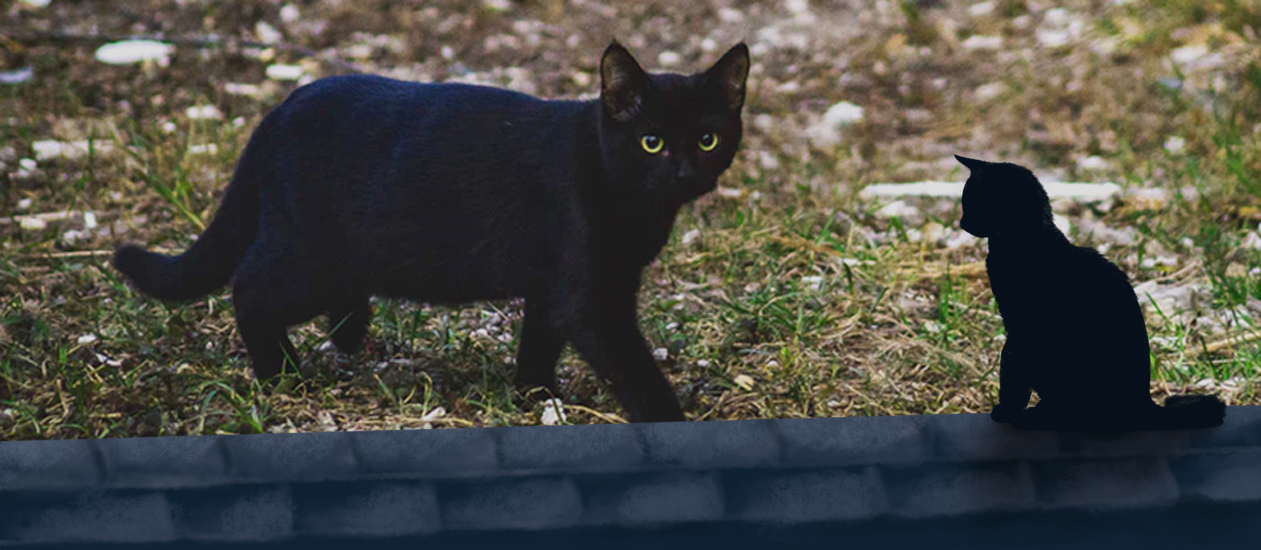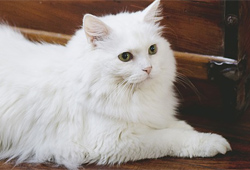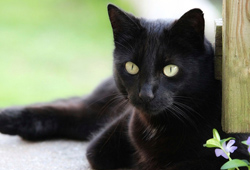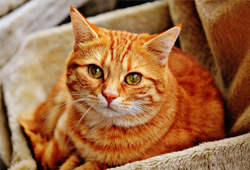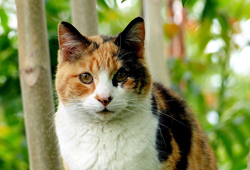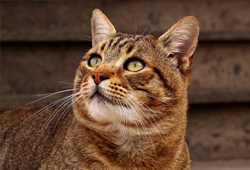Soul Guide
It is the kindest gift our Lord has granted us, that no man must die alone.
Moments after a baby is born, a cat will creep into the room to lie beside it. No one is really sure where they come from; perhaps they just appear out of thin air. That cat will follow the child for the rest of its life, sometimes out of sight, sometimes invisible or intangible, but always nearby.
When that child eventually reaches the end of their life, the cat will approach them, speak, and offer to show them the way to move on. What exactly you are moving on to varies by culture, but everyone must travel overland to one of a few dozen gateways scattered across the world in caverns.
In Europe, it is always a cat. Cats are the most common form that soul guides take the world over, and for centuries, the idea that different animals could serve as guides was laughed at in Europe. However, it is now known that in Terre Ternguiré, which didn't see cats until European explorers brought them over, dogs serve the same role.
The cats are one of the truest signs of the reality of fate. Parents grieve when the cat that appears for the child is a kitten, indicating that the person will certainly die in childhood. Sometimes, the cat that appears is nothing but a stumbling newborn itself, blind and clumsy. Soon after birth, the infant will die. This is one of the only occasions when a cat will leave their designated person; the mother's cat will carry the infant's soul to the nearest pathway and await a passing ghost willing to take it the rest of the way.
Appearance
The appearance of your cat indicates more than just the age at which you will die. Cats echo the shape of the soul they are fated to guide, both physically and mentally. Any physical impairment the cat arrives with on the day of a person's birth will certainly be mirrored on their person by the time of death. A child who sees their cat limping, blind, or scarred knows they will have a challenging life ahead of them.
The breed of cat, how groomed it is, the attitude it had, and the look in its eyes all give hints to the personality of its designated person. Many people whose cats appear grungy or tattered will try to drive it away out of fear of being negatively judged. If the child of an aristocrat's cat appears as a shabby mutt, all know that the child will inevitably fall from privilege and luxury.
Soul guides are always of the opposite sex of the person they are attached to1.
Intelligence
Soul guides are not normal cats. They are intelligent, and understand language as well as any human. They often show feline behaviour, such as chasing mice and coughing hairballs, but they understand complex instructions and clearly demonstrate sapient intelligence. They tend to be quieter than living cats, since they feel no need to yell or meow for food nor attention. Anyone who doubted the intelligence of the cats will be proven wrong upon death. Soul guide voices cannot be heard by the living as a rule, but once dead, they are able to speak any language their human can. Because cats cannot communicate before death, humans typically give them names. Usually, family members name a baby's cat when it starts hanging around.Corporeality
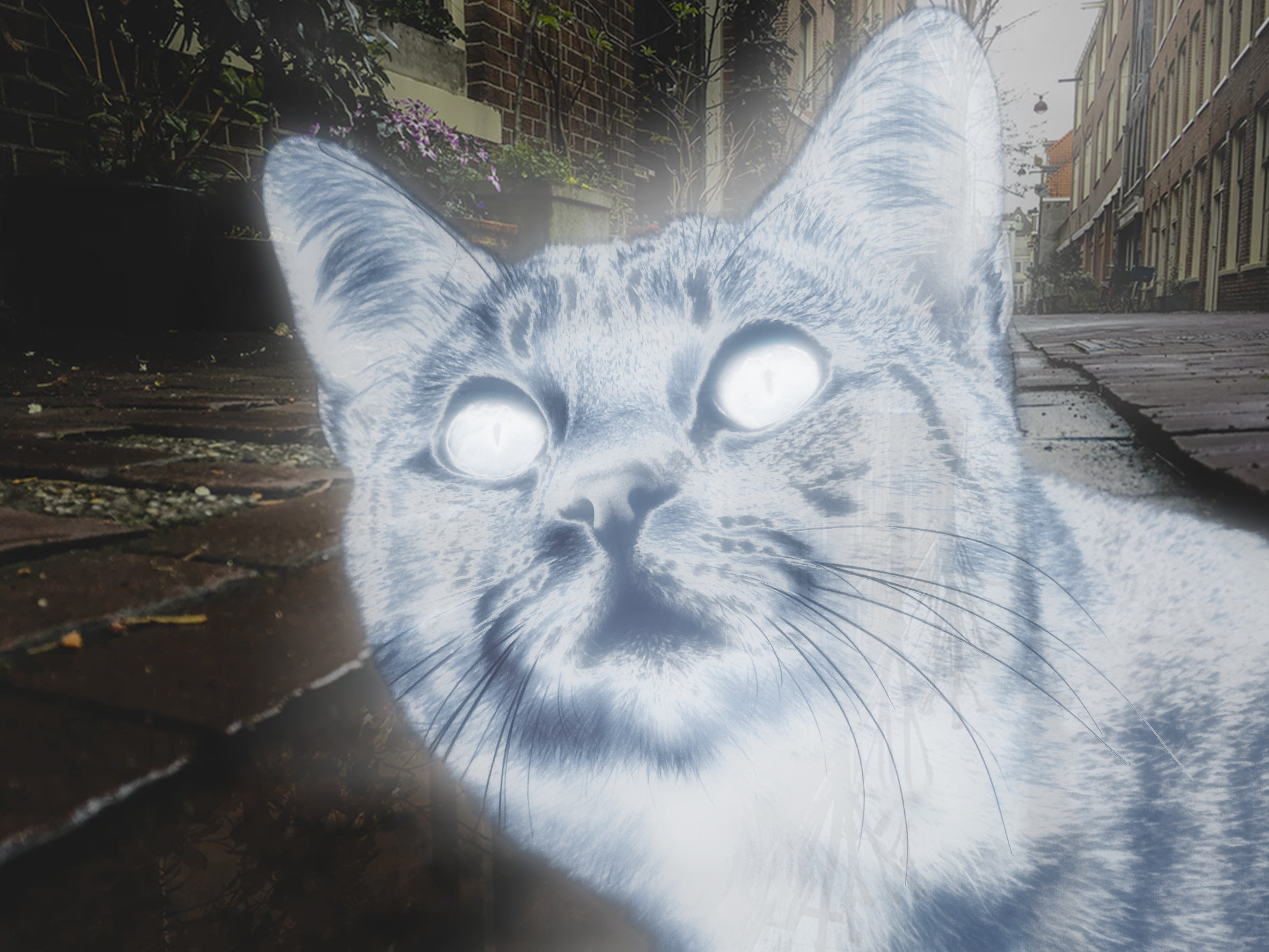 For most things in the world, the mortal realm and the etheric realm can only be crossed by death. Soul guides are the only known creature that can travel freely between the two realms. If they are currently fully physical in the mortal realm, they are invisible in the etheric realm, and vice versa.
A cat fully in the corporeal plane appears as solid and real as any animal, and a cat fully in the ethereal plane is entirely invisible and intangible to living humans. A cat midway between planes appears translucent and pale with a faint bluish hint in both worlds.
No one knows what a soul guide is actually made of. A 15th century monk attempted to discover their make-up by vivisecting his. According to his account, the cat hissed and vanished the moment the knife touched skin, and was never seen again. Rumour abounds - especially among Arbitrists - that this man was abandoned by his cat, had no one to take his soul into the etheric realm, and remains as a tortured delinquent for all time.
A drink made from ghost vine, a plant that grows solely along the edges of ghost paths and fed by vesanmer, allows a person to temporarily become Sighted and become privy to the etheric realm. They are able to speak with their cats in this state, though the drink is discouraged by the church and uncommon (and expensive) in Europe, having been first made in India.
For most things in the world, the mortal realm and the etheric realm can only be crossed by death. Soul guides are the only known creature that can travel freely between the two realms. If they are currently fully physical in the mortal realm, they are invisible in the etheric realm, and vice versa.
A cat fully in the corporeal plane appears as solid and real as any animal, and a cat fully in the ethereal plane is entirely invisible and intangible to living humans. A cat midway between planes appears translucent and pale with a faint bluish hint in both worlds.
No one knows what a soul guide is actually made of. A 15th century monk attempted to discover their make-up by vivisecting his. According to his account, the cat hissed and vanished the moment the knife touched skin, and was never seen again. Rumour abounds - especially among Arbitrists - that this man was abandoned by his cat, had no one to take his soul into the etheric realm, and remains as a tortured delinquent for all time.
A drink made from ghost vine, a plant that grows solely along the edges of ghost paths and fed by vesanmer, allows a person to temporarily become Sighted and become privy to the etheric realm. They are able to speak with their cats in this state, though the drink is discouraged by the church and uncommon (and expensive) in Europe, having been first made in India.
Cultural Reception
Most people have some form of relationship with their cat. Some people keep them like a treasured pet, carrying them around in public and allowing it to sleep on their bed at night. Others, though, fear death and dread the promises of the future their cat brings them. They reject their cat, and refuse to allow it to stay with them.
For many centuries, this has been the practice in Europe. The biblical story of Adam and Eve has a cat tempt Eve with the fruit, and cats' relationship to sin, mankind, and Satan was the subject of much debate in the early years of Christianity. At the Council of Nicea, it became consensus that soul guides, as beings that exist outside of life, are not God's creatures but servants of Satan, and it is them being near to humanity and emanating his influence that allow humans to stray from the Grand Tapestry.
For 1,000 years, soul guides were seen as evil throughout Europe, and largely remained invisible at all times. This changed in the 14th century with the advent of Arbitriumism, an offshoot of Catholicism that embraces soul guides and encourages practitioners to live alongside them. In these countries (e.g., Ireland, France, Espanha, Aragon, Danemark, and Swealand), people tend to bring their cats with them everywhere. It is not uncommon to see shoppers in markets with cats perched on their shoulders, or kings stroking a cat on their lap in royal audiences.

1. Soul guides are of the opposite sex of the human they are assigned to. In 18th century Europe, there are very few people who deviate from the man/woman binary. The cats of those few who do also change their identities along with their humans. They will always be the inverse of their human, even if the 'inverse' ends up being being very close in the centre of a spectrum
What Your Cat Says About You
In Arbitrist countries, people are usually seen with their cat at their heels at all times. Many stereotypes, assumptions, and beliefs are wrapped up on the cat a person has. This is a sample of some associations tied to colour.
A white cat indicates a person who is open, honest, or morally pure. People with white cats are thought to be trustworthy and innocent, and it's a very attractive colour for a lady to have.
A black cat is not necessarily dishonest or dangerous, but it is reserved. People with black cats are not open about their thoughts or feelings, are more likely to lie - either outright or by omission - and are not as open with their feelings.
People with orange cats are thought to be sharp or quick-witted. They are bright and curious, and university campuses are often filled with orange cats. Whether this is proof of their association with intelligence, or proof of bias in admissions, is a hot debate.
A cat with sharp contrasts in coat colours indicates a vivacious person. They might run hot and cold, or approach life with exceptional energy.
Cats in brown, mottled colours as associated with a humble, honest, down-to-earth person. Aristocrats tend to hate having brown cats as they are considered very common and average - a good, solid person who isn't particularly exceptional.
The "reading" a person's cat is an in-depth field with assumptions based on everything from angle of the ears to colour of the paw pads.

